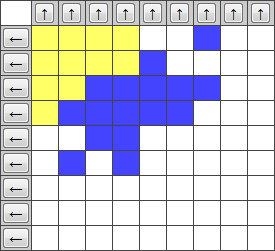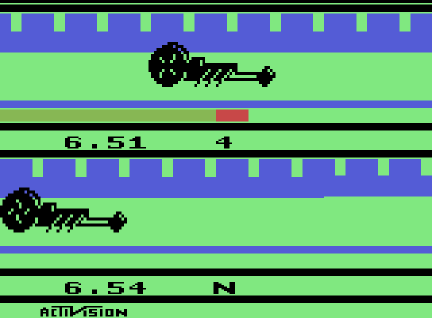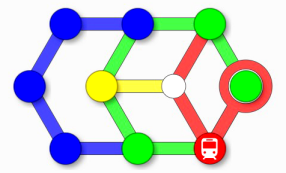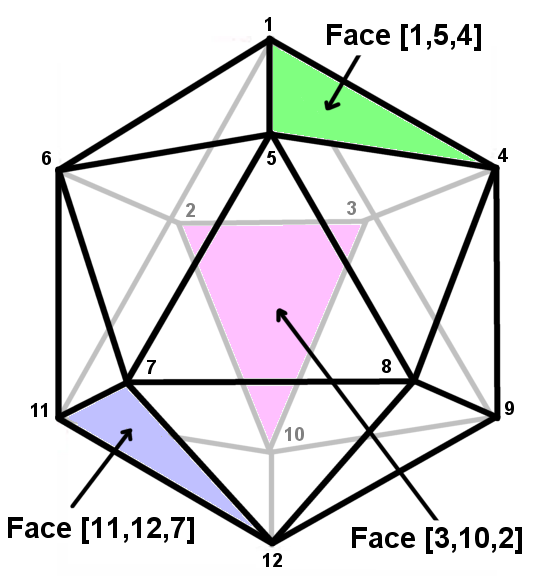While thinking about simple “puzzles” that seem hard at a first glance, but have not enough rules and structural constraints that make it easy to prove that they are NP-complete, I designed the following game (but perhaps it has already a name … let me know if you know it 🙂 ):
- a $N \times N$ grid contains $S \times S$ blue boxes in the upper left area, the home area; each box occupies a cell;
- a column (or row) that contains at least one box is picked at random and it is shifted downward (or rightward). If a box exits from one border it re-enters on the opposite site;
- the random shift is repeated maxmoves times (e.g. $maxmoves = S^2$);
- the aim of the game is to repack the boxes in the upper left home area, using at most maxmoves upward column shifts or leftward row shifts.
A simple javascript version of the game can be played here.
The rules are simple, but even in a small game with a 4×4 home area it’s hard to find the correct shift sequence …
Continue reading



